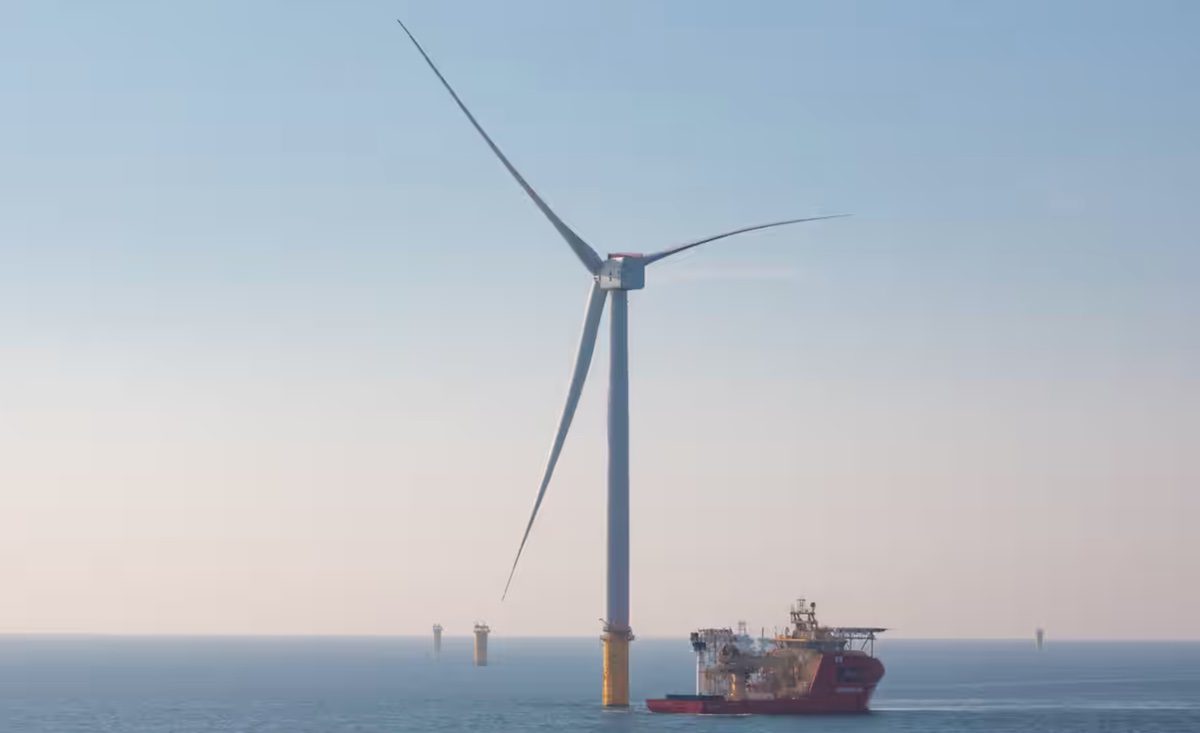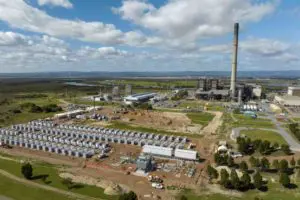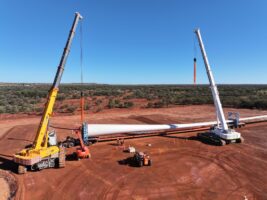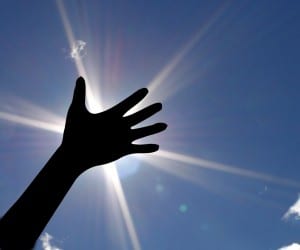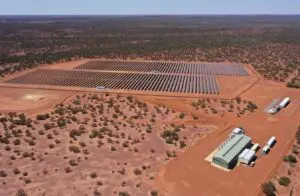The first fully operational turbine at the world’s largest offshore wind farm, the 3.6GW Dogger Bank project in UK waters, has started sending power to the British grid.
Local press reported that developers had confirmed the milestone on Monday, with one of GE Vernova’s massive Haliade-X 13MW turbines – the first of 277 – connected to the electricity grid over the weekend.
The project, jointly developed by Britain’s SSE and Norway’s Equinor and Vårgrønn, is being developed off the coast of Yorkshire in three 1.2GW phases: Dogger Bank A, B and C.
Developers say each rotation of the 107-metre-long blades on Dogger Bank’s first turbine could produce enough energy to power the average British home for two days.
Alistair Phillips-Davies, chief executive of SSE, said the development of offshore wind was “exactly how” the UK should be responding to the global energy crisis and to climate change.
“Dogger Bank will provide a significant boost to UK energy security, affordability and leadership in tackling climate change,” he said.
“[This is] a landmark moment for the global offshore wind industry … demonstrating just what can be achieved when policymakers, investors, industry, and communities work together to achieve something truly remarkable.”
Stretching the sinews of of technology
The production of first power from Dogger Bank – albeit, from just one turbine – is a welcome sign of progress for the offshore wind sector at a time when much of the news has revolved around soaring project prices and abandoned contracts.
It also offers a window into the future for Australia, where one of the Dogger Bank developers is proposing a similarly sized project for the Gippsland development zone off the coast of Victoria.
In Australia, SSE has teamed with Singapore-based and Australian managed Equis Developments to apply for one of the feasibility licences being offered in the Gippsland zone, to build a 3.5GW project in a “target area” of around 700 sq kilometres.
Dan Pearson, the director of business development at SSE, told RenewEconomy in a recent interview that the project the company was proposing for Australia had a lot of similarities to Dogger Bank, including the project size, the water depths and seabed conditions.
“That was one of the reasons for choosing that site,” Pearson said via video call from the UK.
“The way that we develop projects is we will look for the lowest cost of energy. So that’s our main driver. …And so obviously, at certain sites you have better wind speeds and better [water depths].
“The site that we’ve chosen [in Victoria] plays to our strengths,” he added.
“We are… stretching the technology boundaries with Dogger and, you know, without wanting to pour cold water on any of our competitors, they would have to … go up that learning curve to be able to deliver the same sort of project.”
Pearson says the engineering that’s gone into Dogger Bank has been “mind boggling,” but adds that the project – despite its size and complexity – has had a “pretty smooth ride” to development so far.
“We are stretching the sinews of the edge of technology here but so far, so good. We’re very happy how progress has been.”
And he says the investment philosophy for offshore wind is still sound, despite reports of rising costs and supply chain pinch points.
“I think we’re at a bit of an inflection point, whereby I think the supply chain is now biting back, saying, ‘look, you developers have been pushing us really hard over the past decade. We’ve been designing turbines to be able to suit your levelised cost of energy requirements… We now need to take a breath.
“‘We would like to keep these turbines as they are, build up reliability and actually start making some money on the turbines’.
“We still feel that this is a very cost competitive technology that with the right mechanisms can really deliver on the net-zero agenda … And actually, to be honest, I think the government has to rely on it because. … there aren’t that many other avenues for them.”
Pearson says SSE is comfortable with policy approach that the Albanese government is taking for projects, including the current process of bidding for a seabed licence. “We are very familiar with it and comfortable with developer risk,” he says.
And he says the biggest concern for developers hoping to build offshore wind in Australia is that the transmission will be ready to connect the projects to the grid. But well before that, the most important task ahead is community engagement.
“It’s everything,” he told RenewEconomy. “If you don’t have the locals with you, if you don’t have the region with you … then things go south very quickly.”

